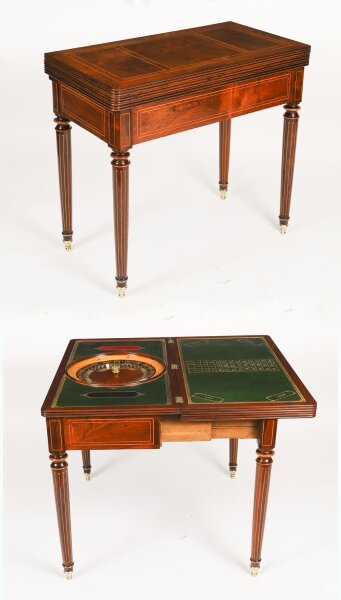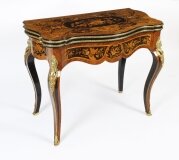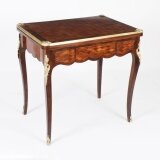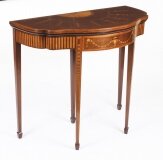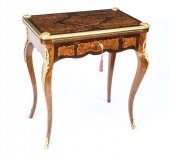The roulette table was commissioned by King Edward VII in 1907 from the American inventor Sir Hiram Maxim. He was to develop a tamper-proof roulette table. The table in question was completed and put to the test in September 1908. Lord Rosslyn, a notorious London gambler sat down at the table with a £10,000 stake and lost it all in the course of ten days. The so-called King's Table remained in the possession of the inventor and was later passed on to his grandson, Colonel Maxim Joubert, who then passed it on to his doctor.
Roulette is a casino game named after the French word meaning little wheel. In the game, players may choose to place bets on either a single number or a range of numbers, the colors red or black, or whether the number is odd or even.
The game has been played in its present form since as early as 1796 in Paris. An early description of the roulette game in its current form is found in a French novel La Roulette, ou le Jour by Jaques Lablee, which describes a roulette wheel in the Palais Royal in Paris in 1796. The description included the house pockets, "There are exactly two slots reserved for the bank, whence it derives its sole mathematical advantage." It then goes on to describe the layout with, "...two betting spaces containing the bank's two numbers, zero and double zero". The book was published in 1801. An even earlier reference to a game of this name was published in regulations for New France (Québec) in 1758, which banned the games of "dice, hoca, faro, and roulette".
The roulette wheels used in the casinos of Paris in the late 1790s had red for the single zero and black for the double zero. To avoid confusion, the color green was selected for the zeros in roulette wheels starting in the 1800s.
Gonçalo Alves is a hardwood (from the Portuguese name, Gonçalo Alves). It is sometimes referred to as tigerwood — a name that underscore the wood’s often dramatic, contrasting color scheme.
While the sapwood is very light in color, the heartwood is a sombre brown, with dark streaks that give it a unique look. The wood’s color deepens with exposure and age and even the plainer-looking wood has a natural luster.
Two species are usually listed as sources for gonçalo alves: Astronium fraxinifolium and Astronium graveolens, although other species in the genus may yield similar wood; the amount of striping that is present may vary.
In the high tropical forests of Central and South America, well-drained soils furnish nutrients for a variety of dense, durable hardwoods sought for maritime use, heavyconstruction, and furniture. The Spanish began harvesting in Latin American forests in the early 1500s to provide timber for boatbuilding and repair. By the early 1900s, however, steel ships had replaced wooden ones, and the interest in tropical forests by both Europeans and Americans shifted to appearance-grade woods for furniture.
Although history fails to provide us with a shopping list of species from either harvest period, it's probable that the wood we know today as goncalo alves has always been sought. That's because goncalo alves, considered one of the most beautiful of tropical woods, has a tough reputation, too. Strong and durable, it's used for construction in its homeland and secondarily for fine furniture. Woodworkers elsewhere treasure the wood for decorative items and veneer accents.
Charles X
Charles Philippe; 9 October 1757 – 6 November 1836, was known for most of his life as the Count of Artois before he reigned as King of France from 16 September 1824 until 2 August 1830. An uncle of the uncrowned King Louis XVII, and younger brother to reigning Kings Louis XVI and Louis XVIII, he supported the latter in exile and eventually succeeded him. His rule of almost six years ended in the July Revolution of 1830, which resulted in his abdication and the election of Louis Philippe, Duke of Orléans, as King of the French. Exiled once again, Charles died in Gorizia, then part of the Austrian Empire.
The reign of Charles X is closely linked to the decorative style that carries his name. Furniture kept the heavy aspect it acquired during the Empire period, yet forms became suppler and lighter following the romantic trend and a renewed passion for the Gothic period. Society was also changing as the king no longer incarnated the taste to observe; now, decorative arts adapted themselves to the demands of the new bourgeois population.
The art of marquetry returned with decorative flowers, garlands and rosettes.
Many combinations of wood were used like burr ash or elm, maple, satin wood, sycamore, walnut were contrasted with types of ebony. Curved lines in furniture began to reappear.


